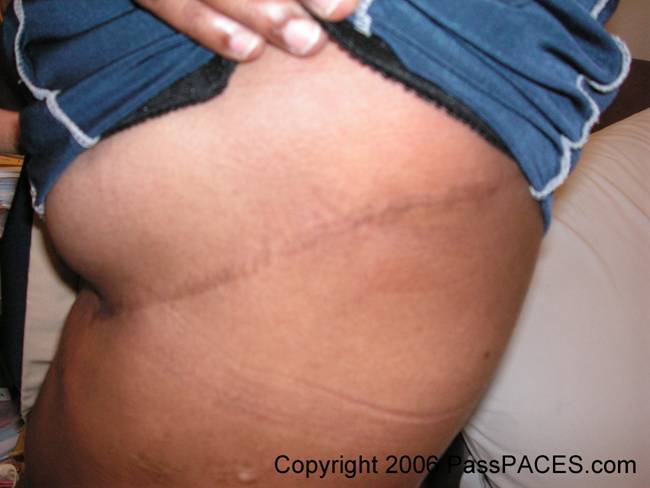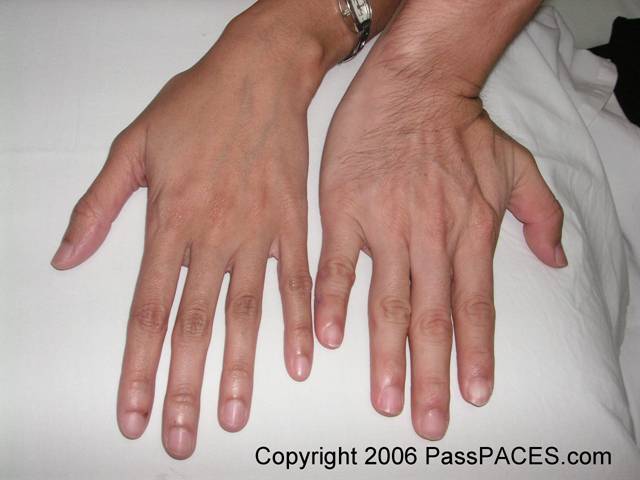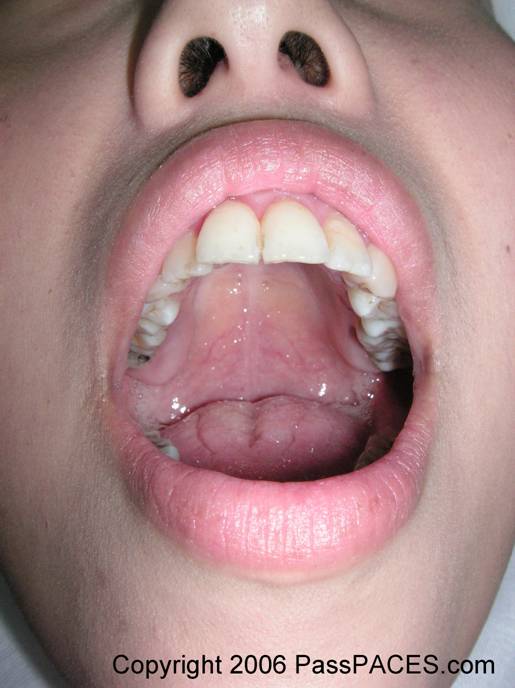
|
|
|||||
|
|
|
|
|
|
|
![]()
YOUR LATEST ISSUE ABOUT MRCP PACES IS HERE!
Examine this lady's respiratory system.

Discussion:
A very popular MRCP question in respiratory station. When you find a lateral thoracotomy scar in respiratory station, always think of three possibilities, namely lobectomy, pneumonectomy and previous lung transplantation surgery.A lot of candidates remember the first two possibilities but always miss the third. The reason is simple, doctors working in many countries such as in Malaysia and Singapore do not deal with post lung transplant patients so often as thier counterparts in developed country such as the United Kingdom and Ireland . Therefore, if you are planning to sit your MRCP PACES in United Kingdom, learn well about transplantation. When you see a lateral thoracotomy scar, spend a few seconds to have a thorough look at your patient, if you notice physical signs suggesting Cushing's syndrome, then you are most probably dealing with a patient after lung transplantation. Always pay attention to look for side effects of cyclosporin as well such as gum hypertrophy and excessive hair growth.If you do not notice these, then you are most probably dealing with lobectomy or pneumonectomy, some candidates find it difficult to distinguish these two conditions, I think there are a few important points to take note.
First point, in lobectomy, you may find reduced breath sound in certain areas such as upper/middle/lower region but in pneumonectomy, there is reduced breath sound over the whole affected lung.
Second point, there may be no sign to suggest mediastinal shift in lobectomy ( central trachea) but in penumonectomy, you are expected to find signs suggesting mediastinal shift ( based on your tracheal position or apex beat).
Third point, percussion would review dullness generally for pneumonectomy but not in lobectomy.
Common questions examiners would ask you,
2) What are the common indications for lung transplant in United Kingdom?
3) What are the common side effects of cyclosporin? Find out more here!
4) What are the contraindications for surgical intervention in lung cancer?
Conclusion:
This lady has lateral thoracotomy scar due to previous lobectomy because of lung cancer.
Extra points:
2) Lobectomy or even pneumonectomy was done previously for treatment of tuberculosis!
| Case ID: 2 | Created: 29 July 2006 |
Examine this lady's cardiovascular system.

Discussion:
A rather uncommon case in your daily practice but it is popular in MRCP cardiovascular station. You notice this lady has long fingers ( arachnodactyly). Patient's hand is at the left and mine is over the right. You would be happy if you get this case,yes, finally you are seeing a case of Marfan syndrome in your exam.Demonstrate to examiners and convince them that the patient's fingers are long by demonstrating thumb sign ( ask patient to clench her thumb in her fist, the thumb should not exceed the ulnar side of the hand in normal subjects) and wrist sign ( put patient's fingers around her wrist, you would notice her thumb and little finger overlap), look for other signs to suggest Marfan syndrome such as high arched palate ( in this patient), small papules in the neck, up-ward dislocation of the lens, kyphoscoliosis, and chest wall deformity. For the heart, you would anticipate you are most probably to find either aortic regurgitation or mitral regurgitation.Remember to suggest to examiners that you would like to ask about the family history .

Common questions examiners would ask you,
1) What are the diagnostic criteria for Marfan syndrome?
2) What are the differentiating features between Marfan syndrome and Homocyctinuria?
3) What is inheritance pattern for Marfan syndrome?
Conclusion:
This lady has Marfan syndrome and mitral regurgitation .
Extra points,
1) When asked about the management of an illness, always remember that patient education is very important if the illness is chronic and incurable. Remember genetic counselling if it is inherited.Learn more about Marfan syndrome here!
2) Cardiovascular complications are the major cause of death in Marfan syndrome!
To see previous issues, click here! To send a quick comment, click here!